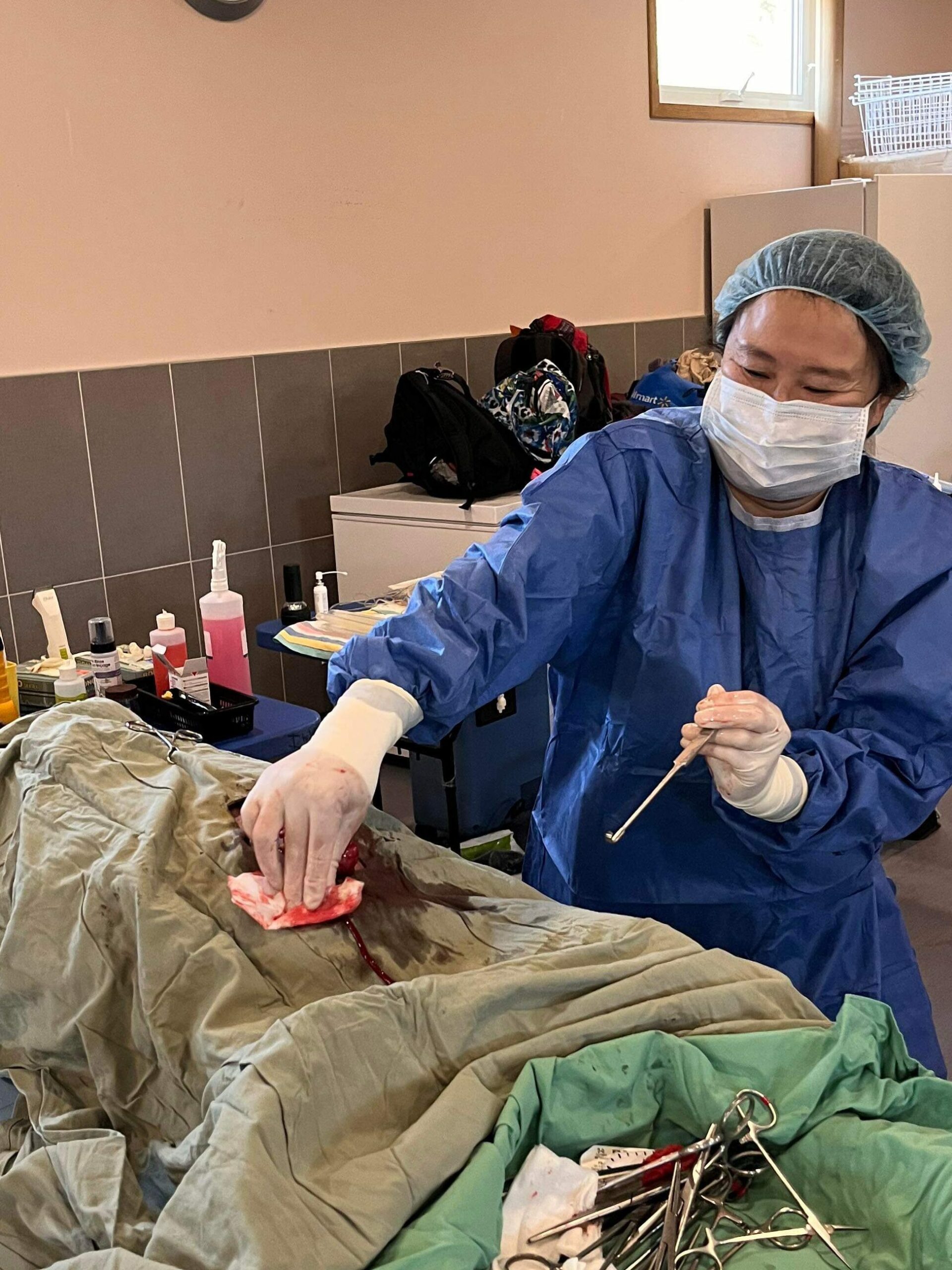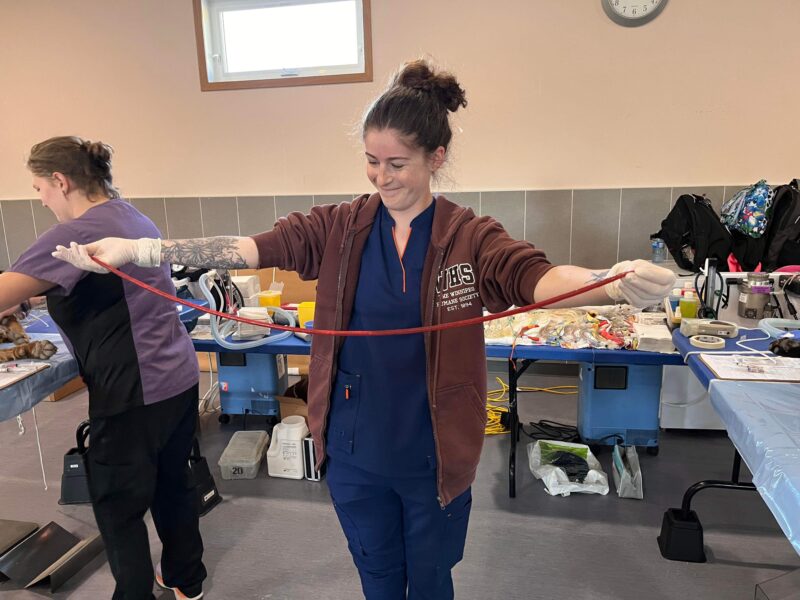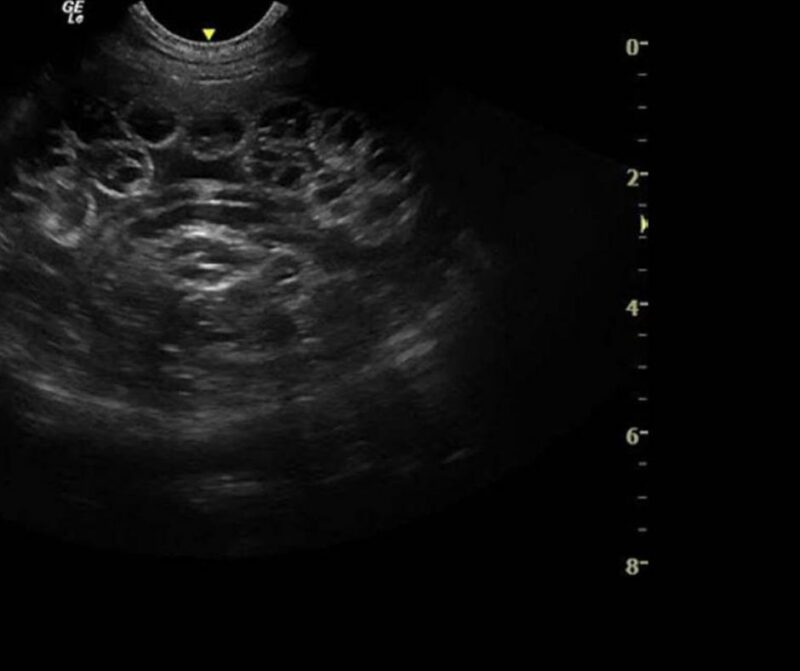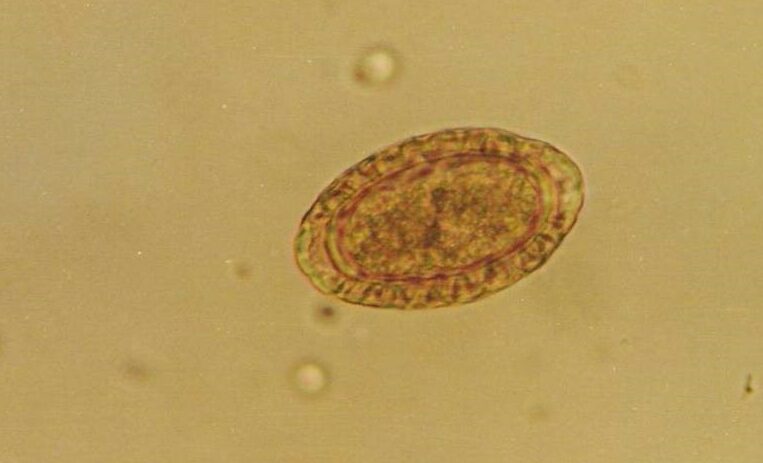By Gina Bowen, DVM, Director of Veterinary Services – Winnipeg Humane Society, CASCMA
Since seeing these giant prehistoric looking worms for the past 6 years or so, the excitement has died down for me, but I was reminded recently of how truly weird and wonderful these worms are when I watched the entertainment of a veterinarian from Vancouver Island seeing this parasite for the first time when spaying a dog on a Winnipeg Humane Society trip to Northern Manitoba. There was some flicking and screaming and giggling and long story short, the dog got spayed but it was a story being told by my vet friend (pictured below) for the rest of the day.

Manitoba has an abundance of dogs in our Northern communities and there are some rescues who are regularly transporting Manitoba dogs to British Columbia, Ontario and further East when space in other rescues/shelters allows. I don’t want to rob you of the adrenaline rush of encountering one of these beastly worms at your next surgery, but to be real, even if I do warn you, you’ll still get a big kick out of your first face to face encounter.
Dogs are the definitive host of the Giant Kidney worm, they get infected when consuming raw fish or frogs containing larvae in certain geographic pockets of Northern Manitoba. The larvae migrate from the duodenum into the abdominal cavity and develop into mature worms (prepatent period is 4-5 months) that stay near to the right caudal liver lobe area. The adult worms then migrate through the right kidney capsule to reproduce and shed eggs in the urine. Dogs appear to be asymptomatic for the most part aside from UTI’s and hematuria and the parasite is usually diagnosed during elective spay. It is a nematode that is one of the longest to infect mammals and can grow to be 100cm in length. Infected dogs shed eggs in their urine that contaminate water. The eggs infect oligochaetes and hatch into larvae which infect frogs and fish who are in turn, consumed by dogs and the life cycle is complete.

Typical size/length of a kidney worm (pictured above)
A red flag that you have an infected dog on your surgery table during a spay is that the omentum has a brown, friable look, there is some bloody fluid in the abdomen and fibrin and then of course, the actual worms. If you see these changes to the omentum, extend your incision and use your hand to sweep in the cranial right area of the abdomen, just caudal to the right liver lobes, this is the most common place to find adult worms that have not yet migrated into the kidney. Palpate the right kidney capsule. I have never seen this parasite affect the left kidney, but an infected right kidney feels like a soft bag of noodles. It’s helpful to feel both kidney capsules to compare while in surgery.
There is very little published research on this ugly ascarid. The Winnipeg Humane Society has developed a protocol to deworm and screen dogs coming in from high-risk communities. Puppies less than 5 months of age are dewormed with strongid/praziquantel and a 5 day course of Fenbendazole at 50mg/kg/day. We have had a couple of cases of puppies dewormed with strongid/praziquantel who were adopted out, be presented with adult kidney worms as young adult dogs. It seems that the larvae are not easy to kill. I suspect the problem is drug penetration when the larvae have migrated into the abdominal cavity. We do a urinalysis and kidney ultrasound on all dogs over 5 months of age from the high-risk communities. Isosthenuria, UTI’s and ascarid eggs are common findings in affected dogs. On ultrasound, they ascarids are easy to see within the kidney parenchyma. If a dog is diagnosed with Giant Kidney worms, we do a CBC/CHEM to check kidney function and PCV and proceed to manually remove all worms from the abdomen and a right nephrectomy if the kidney is infected. Some dogs just have worms in the abdomen with healthy kidney parenchyma and normal urinalyses. I’ve also done surgery on dogs where the right kidney has fibrosed down to scar tissue with no remaining normal structure and a completely normal left kidney. Those I leave alone as there are no more worms in the kidney and the organ is completely non- functional. Whatever the case, the goal is to remove all adult worms, aggressively deworm to treat the larvae and send them off to forever homes.

A giant kidney worm on ultrasound (above)

A giant kidney worm egg on urinalysis (above)
The CASCMA Blog is proudly sponsored by Ogena Solutions

